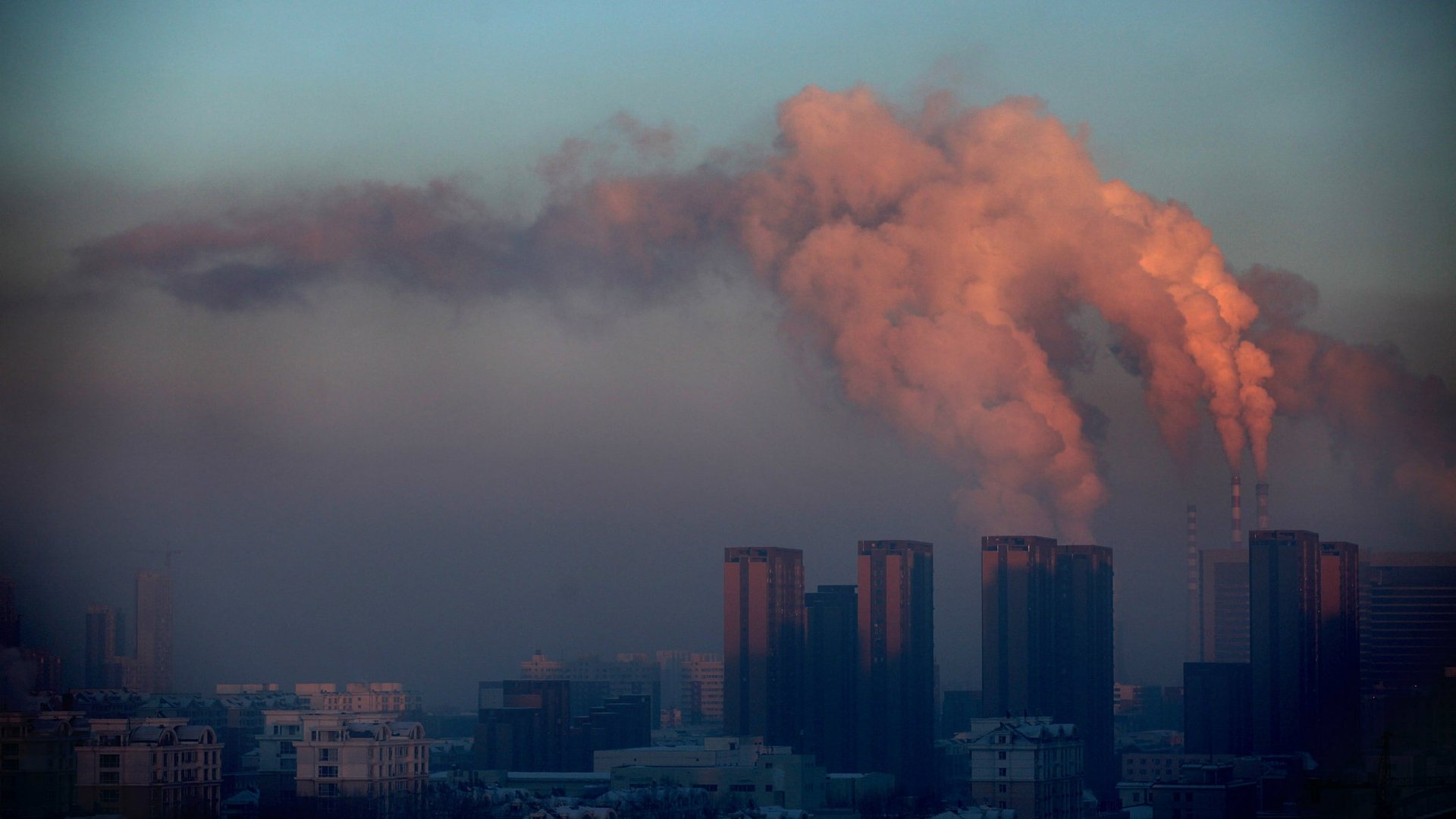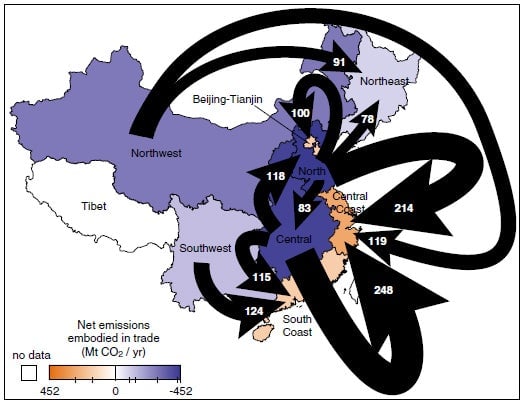China is “outsourcing” pollution internally to meet carbon emissions targets
Measuring carbon dioxide emissions by where they occur is not terribly helpful, according to a study by an American research body, because countries easily fall into the habit of outsourcing their pollution to the developing world. China is doing it internally.


Measuring carbon dioxide emissions by where they occur is not terribly helpful, according to a study by an American research body, because countries easily fall into the habit of outsourcing their pollution to the developing world. China is doing it internally.
The journal article in Proceedings of the National Academy of Sciences found that in 2007, 57% of China’s 4 gigatonnes (4 billion tonnes) of CO2 emissions during production of goods or services were ultimately consumed abroad or in different Chinese provinces. This is what it looks like on a map.

In poorer regions, between 81% and 94% of emissions came from the manufacture of unfinished goods traded with other provinces. Inner Mongolia, for example, is dominated by heavy, energy-hungry factories that accounted for 70% of its total industrial output in 2007.
“China is treating its own hinterland just the way the whole world treats China, which is outsourcing its dirty pollution to the poorer regions,” Klaus Hubacek, a co-author of the paper, told the BBC. “Money chases the cheapest ways of producing goods around the world. These regions have lower efficiency and less valuable technology, so they create more pollution per unit of output than the richer regions,” he said. Indeed, China has long been a pollution outsourcing destination for developed nations.
The process is not always deliberate. Air pollution in cities like Beijing is so bad that local governments are taking extraordinary measures to bring it under control. Plans to build factories infamous for the pollution they produce have been met with resistance in nearby cities. But in rural areas and poorer provinces, resistance is minimal.
One of China’s worst environmental offenders is its coal industry. Chinese power plants rely on coal for 70% of their electricity generation, but a recent proposal to ban imports of low-quality coal has been met with fierce—and powerful—internal resistance. China’s coal mining industry insists that thousands of jobs will be at stake if the proposals are implemented, in an industry that has already lost 10% of its mines in the last year due to a slowdown in China’s growth. Changing the emissions landscape is difficult, even for China’s leaders, although the country is rapidly expanding its hydropower and solar industries.
Beijing has promised to take action on climate change, signing up to targets at the Copenhagen Climate Change Conference in 2009 and agreeing with the US last weekend to scale back emissions of selected “super greenhouse gases.” But targets may now be harder to meet. “I think the carbon leakage problem is likely to make it more challenging for China to meet its climate goals,” a climate analyst at the World Resources Institute told the Guardian. In the long term, shifting emissions around to meet regional targets just won’t cut it.